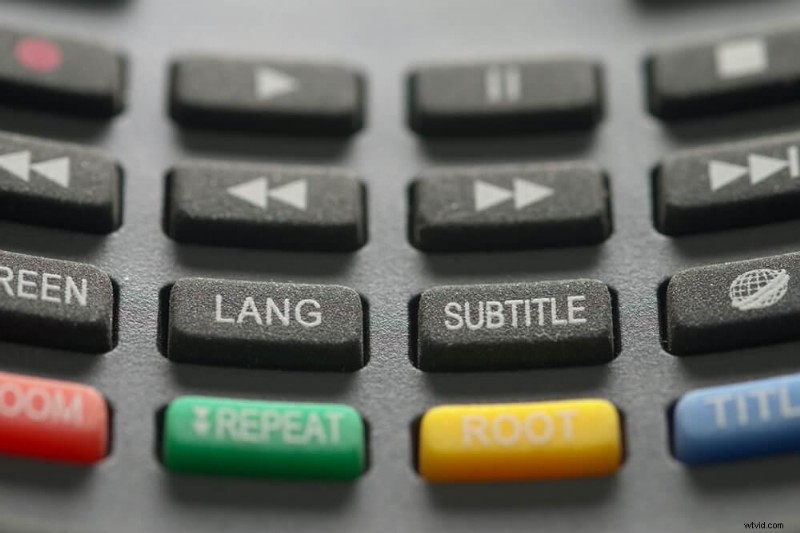Najnowszy hit Netflix, Squid Game, okazał się natychmiastową skarbnicą rozrywki dla swoich widzów. W programie 456 zdesperowanych finansowo graczy walczy o nagrodę pieniężną o wartości 45 miliardów dolarów – ale te gry szybko stają się śmiertelne, gdy walczą ze sobą i innymi rywalami takimi jak oni.
Pełen akcji dramat podąża za kilkoma postaciami w ich wyprawie przez te śmiertelnie niebezpieczne pojedynki, desperacko starając się nie zostać pokonanym przez nikogo innego lub ryzykować, że zostaną pokonani, zanim dotrą do linii zwycięstwa z całym tym łupem w grę.
Z fabułą, która łączy satyrę i melodramat, Squid Game jest również prawdopodobnie jednym z najbardziej innowacyjnych, oryginalnych i oczekiwanych programów na Netflix. Ta wciągająca opowieść o tym, do czego ludzie są zdolni, by zdobyć pieniądze, została oparta na kilku grach.
Sześć gier, w które grają uczestnicy, opiera się na koreańskich grach dla dzieci, które wiele osób już zna, takich jak przeciąganie liny i czerwone/zielone światło. Ostatnia gra nazywa się „gra w kalmary”.
Fabuła:gra w kalmary

450 zadłużonych ludzi ryzykuje życiem, aby wygrać pieniądze. Każda gra ma inny wynik, a przegrana choćby w jednej grze może kosztować ich życie!
Program podkreśla podział klasowy w Korei Południowej z ośmioma głównymi postaciami, które odgrywają ważne role podczas wszystkich sześciu rund - od szefa gangu po odnoszącego sukcesy biznesmena, teraz ściganego przez prawo za okradanie swoich klientów, od migrującego pracownika fabryki, który wykorzystuje swoją szansę na wygraną miliony w tych zabójczych grach uciekinierowi z Korei Północnej i nie tylko.
Spektakl zyskał uznanie krytyków za ekscytującą fabułę, doskonałe dialogi i porywającą historię. Ale jedyna skarga niektórych widzów dotyczy kiepskich napisów w programie. Hitowy serial znalazł się pod ostrzałem z powodu „poważnych błędów tłumaczeniowych” w napisach. Ekspert językowy ostrzegł, że prawdziwe znaczenie wydarzeń przedstawionych w tym hitowym programie może zostać utracone między innymi dlatego, że tekst na ekranie jest niedokładny.
Podobnie jak w przypadku wszystkich tłumaczeń, czasami trzeba dostosować znaczenie, a niektóre szczegóły gubią się w tłumaczeniu, ponieważ języków nie można tłumaczyć bezpośrednio. Jednak w napisach często brakuje istotnych informacji lub występują poważne błędy w tłumaczeniu z powodu:
- Ograniczona ilość miejsca (w programie telewizyjnym jest tylko określona ilość miejsca na ekranie)
- Złożoność słów i struktury zdań; trudne zdania tworzą dłuższe teksty, które źle tłumaczą się na małe ekrany bez funkcji podświetlania.
Błędy napisów
Błędy napisów w filmach i programach telewizyjnych są tak powszechne, że niemal oczekuje się, że będą częścią wrażeń podczas oglądania. Jednak większość widzów nie zdaje sobie sprawy, że te błędy często wykraczają daleko poza błędy ortograficzne i złą gramatykę; wiele razy napisy zawierają treści, które nie były przeznaczone dla zagranicznych odbiorców.

Do pewnego stopnia zrozumiałe jest, dlaczego tak się dzieje. Zagraniczni dystrybutorzy często zatrudniają tanią siłę roboczą w krajach rozwijających się, aby zaoszczędzić na kosztach tworzenia napisów. Jeśli jednemu słabo opłacanemu pracownikowi zostanie przydzielone zadanie przetłumaczenia dwugodzinnego filmu i napisania napisów, to zrozumiałe, że znajdzie sposób na jak najefektywniejsze wykorzystanie czasu i wysiłku. A jeśli płacisz grosze za godzinę, czy zamierzasz kłócić się ze swoim pracodawcą o poprawność gramatyczną?
Jednak nie trzeba dużo kopać w Internecie, aby fani znający języki obce natrafili na dość interesujące błędy, które wykraczają poza zwykłe brakujące litery. Od czasu do czasu słyszymy o fanach, którzy wolą napisy od dubbingu, ponieważ uważają, że jest to bardziej dokładne.
To przekonanie wynika prawdopodobnie z powszechnej praktyki usuwania treści lub dialogów, które mogą być obraźliwe dla innych krajów, w których materiał będzie dystrybuowany, a także poprawiania drobnych błędów gramatycznych i ortograficznych, które wynikają z ograniczeń czasowych w produkcji napisów. Ale niektórych nie da się tak łatwo usprawiedliwić…
Dlaczego błędy napisów są tak częste?
Nie wiemy dokładnie, ile błędów napisów powstaje każdego roku, ale liczba ta prawdopodobnie przekracza dziesiątki milionów. Wiele treści z napisami pochodzi z różnych krajów, więc nie jest zaskakujące, że języki, których to dotyczy, to często angielski i nieanglojęzyczny.
Oznacza to, że istnieje znacznie więcej możliwości popełnienia błędów, niż gdyby wszystko było w jednym języku. Na przykład francuscy producenci filmowi mają dostęp do galijskiego wsparcia audiowizualnego, zamiast uciekać się do amerykańskich lub kanadyjskich przyjaciół o pomoc z napisami – zaleta, która nie dotyczy ich indyjskich odpowiedników, którzy muszą zwrócić się do native speakerów spoza Indii o pomoc z angielskimi napisami.
Fakt, że osoby, dla których język obcy nie jest językiem ojczystym, jest zwykle wynagradzany mniej niż profesjonaliści, sprawia, że problemy stają się jeszcze bardziej prawdopodobne. Ponadto im bardziej nieznany język, tym większe ryzyko błędów.
Tłumaczenia dosłowne
Osoby, dla których język obcy nie jest językiem ojczystym, czasami stosują zbyt dosłowne tłumaczenie z własnego języka na angielski. This can lead to odd sentences that may convey the meaning, but not the style or rhythm of the original.
In some cases, it could be argued that nothing is lost - apart from a few superfluous words which could have been better used elsewhere. However, in most instances an overly literal approach results in “noise” – stuff that’s surplus to requirements and should have been cut out.
Punning Subtitles
A subtitler has a limited space through which to express themselves so puns are likely to pose problems.
Subtitles often try to convey the same feeling as the original dialogue, but puns rarely translate well. As a result, it’s common for subtitles to lose their “punch”. In addition, the subtitler has to pick from a handful of possible substitutions that can sometimes make little sense.
Lack of Training
Subtitling is an art and a craft which takes time to learn. Even native speakers need years of experience before they can turn out error-free subtitles.
It’s not surprising, therefore, that non-natives are going to take even longer - especially if they receive little or no training prior to employment. In fact, many will probably never become competent subtitlers despite being immersed in their source language for years on end!
Tight Deadlines

The high demand for subtitles means most providers aren’t about to ask their staff to submit work late even if there are problems with quality control. So, deadlines are usually tight leading to an ever-increasing risk of mistakes creeping into the final product.
There are many reasons why subtitles go wrong but these are probably the main ones… which hopefully helps explain why there’s so much incorrect subtitling out there!
Poor Timing
There are various timing methods for adjusting subtitles to fit the dialogue. These include:
- Lead In/Lead Out
- Preferred Timing (PTS)
- Adopted Timing (AT)
- Center Cut
They all work well, but usually it’s necessary to re-time one or more lines because of errors or fluctuations in the source. This changes the length of time that the subtitle appears onscreen - often resulting in a mismatch with what’s being said. It’s not surprising therefore that this is another common mistake!
Subtitles also have to deal with overlapping speech which can be difficult if there are problems aligning subtitles with their corresponding audio track. The only solution is to delay showing subtitles until after they’ve spoken - which again can result in timing errors.
Sticking to Exact Phrasing
Some subtitle formats allow the creator to use exact English phrases verbatim . This is intended only for places where the dialogue is being quoted or sung - but some subtitlers see it as an opportunity to ignore correct translation principles by sticking to their own language style.
They figure that if they’re close enough, viewers will understand what’s being said even though it may be incorrect. It might not affect everyone, but for those it does impact, it can lead to major misunderstandings!
The solution of course is for providers to specify that the English should follow the time codes rather than just repeat everything word-for-word.
Subtitler Poor Spelling and Grammar
It’s widely accepted that good spelling and grammar are vital if subtitles are to be understood. Unfortunately, there are subtitler who believe it’s OK to ignore them - especially when typing at speed.
So, this is yet another common mistake that risks “rubbing off” on others who read the translations of their work! Subtitles must not only look right but also sound right which means correct punctuation is also important.
Think about what you’re writing and check for mistakes - then sleep on it before making final edits because you could always miss something!
Chewing the Scenery
Some subtitlers want to make a big impression by using different styles of translation depending upon whether they’re dealing with serious or humorous material.
They want viewers to see that they’re clever, inventive and dynamic. It’s interesting to note that nobody even notices when native speakers make mistakes in their speech - but subtitles are under the microscope all the time so everyone sees them!
As a result, if you want to be taken seriously as a subtitler, it’s much better to stick with one style of translation especially when working with serious material because audiences will assume minor inaccuracies are due to transcription errors rather than your lack of skill!
Dubbing vs. Subtitles
It used to be assumed that viewers would always prefer dubbed versions over subtitles for foreign language content. However, audience demographics have changed considerably since then making it far easier for providers to get away with subtitling almost anything and still make money.
This has brought subtitling to the forefront and audiences now expect it for all foreign language content. Unfortunately, some providers still think they can get away with dubbing for anything considered “high-brow” - such as documentaries, art house movies or educational programs about science or history.
Clearly this is not the case as people want correct translations that they can read at their own speed without having to listen carefully too. Sadly, they’re likely to switch off pretty quickly if you don’t provide them with what they want so play safe and subtitle your material properly!
What’s the Difference Between Closed Captions and Subtitles?
While both subtitles and closed captions are displayed text that transcribe video to text, translate or otherwise convey the audio portion of television programs, movies and video games to individuals who cannot hear them, there are important differences between the two.
Closed captioning may also include sound effects or other sounds in order to better convey important information about ambient noises - a feature often missing from subtitles.
Subtitles translate video dialogues and on-screen text into a language that the viewer understands, while closed captioning describes sounds and sound effects as they occur, which makes them particularly useful for individuals who are deaf or hard of hearing.
The benefits of closed captioning are for people who are deaf or hard of hearing, while subtitles are intended to assist people who speak a language other than the one spoken in the video.
SubtitleBee Offers Accurate Subtitles and Captions for All Your Projects
At SubtitleBee, we are passionate about providing high-quality subtitles for users of all types. Whether it’s educational material, film or television content, we offer subtitles and translations in 100+ languages.
In today’s world of on-demand, streaming services and YouTube videos it is more important than ever to have high quality subtitles. In particular foreign languages can tremendously expand an audience base as well boost search rankings in countries where they aren’t available - which will increase discoverability for viewers across the globe!
Our easy-to use subtitling and audio transcription service guarantees high quality translations at an affordable rate, saving you time. We have subtitles in over 100 languages that will get your message across no matter what the occasion.
For more information, feel free to contact us today!
